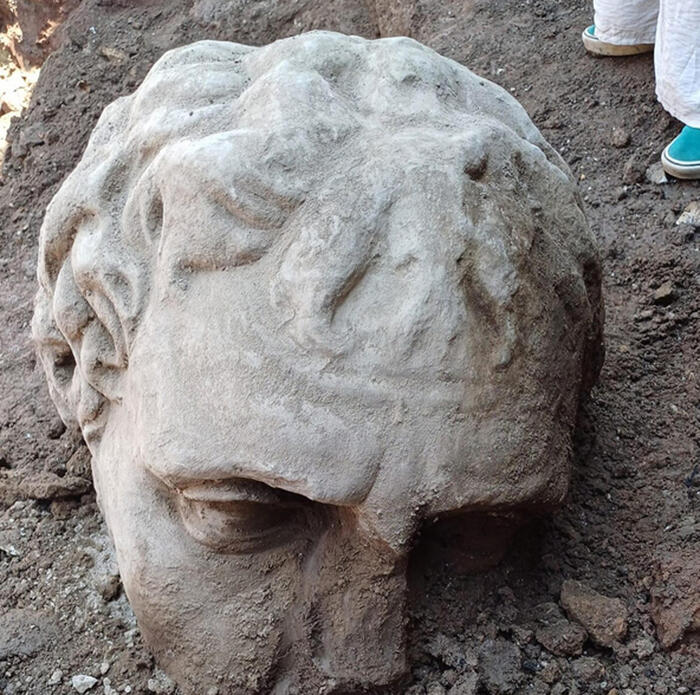A large marble head was unearthed during the excavation campaign begun last November by the Capitoline Cultural Heritage Superintendence along Via Alessandrina, near Trajan’s Forum-a famous monumental complex dating back to imperial Rome.
According to archaeologists, it is a male face, characterized by thick hair and an intense expression. The sculpture, which had been hidden for centuries, resurfaced from a medieval-era layer that also contained materials from earlier times, which are currently being studied by experts.
Trajan’s Forum, built with the spoils of the Dacian Wars that ended in 106 AD, is considered the most impressive of Rome’s Imperial Forums. It was designed by Apollodorus of Damascus, a celebrated architect and military engineer who accompanied the emperor on his military campaign. The original structure, about 300 meters long and 185 meters wide (roughly 1,000 by 600 feet), included a large plaza, the Basilica Ulpia, two libraries, Trajan’s Column and, later, the Temple of Trajan, built by Emperor Hadrian in honor of his predecessor.
Archaeological investigations conducted between 1998 and 2000 confirmed the dating of the complex and provided further details about its structure and transformations over the centuries, particularly during the Middle Ages.
The newly-discovered head find is located in the area where in ancient times stood the Porticus Trisigmentata, a monumental columned gallery with monolithic columns nearly 35 feet high. It is one of the most significant testimonies to the architectural grandeur of the forum, typical of the late imperial period, characterized by an evolution of classical forms influenced by Hellenistic art and rich marble and sculptural decoration.
Thus far it has not been possible to determine with certainty the identity of the person represented, it could be a deity, an emperor, or an eminent figure of the time. However, the size and high quality of execution of the sculpture suggest that it is a figure of great importance, linked to a symbolic or celebratory significance of particular importance.











